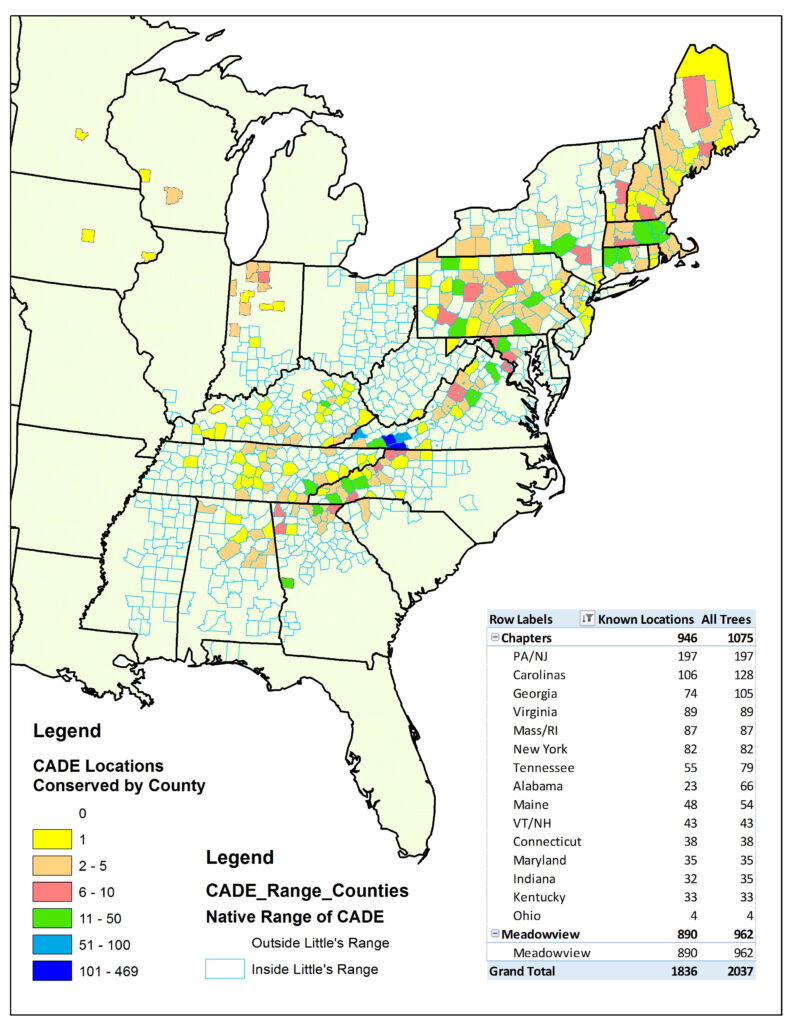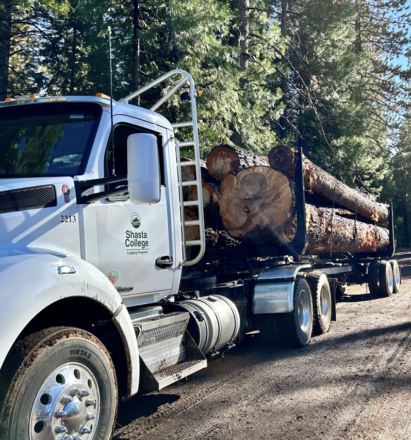Wanted: Flowering American Chestnut Trees

Most individuals connected to forestry know about the historical demise of the American chestnut, once considered the king tree of the eastern forest. Most are also aware of the long-term research and slow progress being made toward developing timber-quality chestnut trees that are reasonably resistant to the chestnut blight via crossbreeding of the American tree (Castanea dentata) with the more resistant Chinese chestnut trees.
This April, FRA’s Appalachian Region Policy Committee visited the American Chestnut Foundation’s Meadowview Virginia Research Farm where we could clearly see the generational progress of the trees in the various chestnut seed orchards. Some interesting things we learned:
- While the American chestnut effectively never reaches maturity in the wild or elsewhere, there are lots of trees still alive as stump sprouts, especially in the Appalachian states.
- Quite a few seed sources of wild American chestnuts have been obtained from the northeastern states, but the southern states don’t seem to be producing many flowering trees or nuts. The American Chestnut Foundation (TACF) is looking specifically for any flowering American chestnut trees from the states of West Virginia and Mississippi. The map below, courtesy of TACF, shows the American chestnut’s natural range and the number of locations where flowering chestnut trees have been located for breeding and conservation of chestnut germplasm.

- Most American chestnut stems, whether from stump sprouts in the woods or from trees grown in eastern U.S. seed orchards, die by age ten.
- Among the genetically crossed and improved American chestnuts in the orchards at Meadowview Farm, the trees that have the best timber form and the most resistance currently to the blight are not flowering. Most other same-age chestnuts with significant blight cankers are already flowering.
- Crossing American chestnuts with Chinese chestnuts introduced complicated genetic interactions with the Chinese genes; this has slowed the process of producing trees with the tall, straight form of the American species that are more blight-resistant but don’t exhibit the branchy, spreading form of the Chinese species.
- Chinese and European chestnuts also are susceptible to the chestnut blight in Asia and Europe, but the strength of the blight and tree resistance seems to vary greatly. Some of the resistance in Asian trees is due to hypovirulence (decreased strength or virulence of the pathogen due to various factors).
- Site location of the plantings of genetically improved chestnuts in the U.S. seems to have an important influence on the trees’ susceptibility to the blight at an early age. The trees planted on sites with better drainage and higher up on the terrain seem to be doing better.
How can you help?
Anyone working in forests within the tree’s natural range can be on the lookout for flowering American chestnuts this year. The chestnuts typically flower from mid-June to early July. (You can find photos of American chestnut trees and flowers online.) TACF is looking for additional trees to augment the diversity represented in its breeding program. Please visit the Foundation’s website (www.acf.org/resources/identification/) for detailed directions on what to do if you find a flowering American chestnut. In a (chest)nutshell, the procedure is as follows: The first step is sending in a tree locator form (on website) and a leaf/twig sample to the appropriate regional science coordinator (refer to website for coordinators’ e-mail addresses). TACF will take pollen or seeds if the tree is positively identified as an American chestnut. The regional coordinator will provide guidance if and when a flowering tree is identified.
Typically, the place you are most likely to find flowering American chestnut trees—those that will produce nuts—will be sites open to sunlight most of the day, usually trees in recent clear cuts and along forest or road edges.
Feel free to forward this information to the forestry and logging associations and other interested groups in your state.
By nature, foresters think long-term. It would be amazing if we could someday re-establish this iconic timber and wildlife tree in eastern forests.


